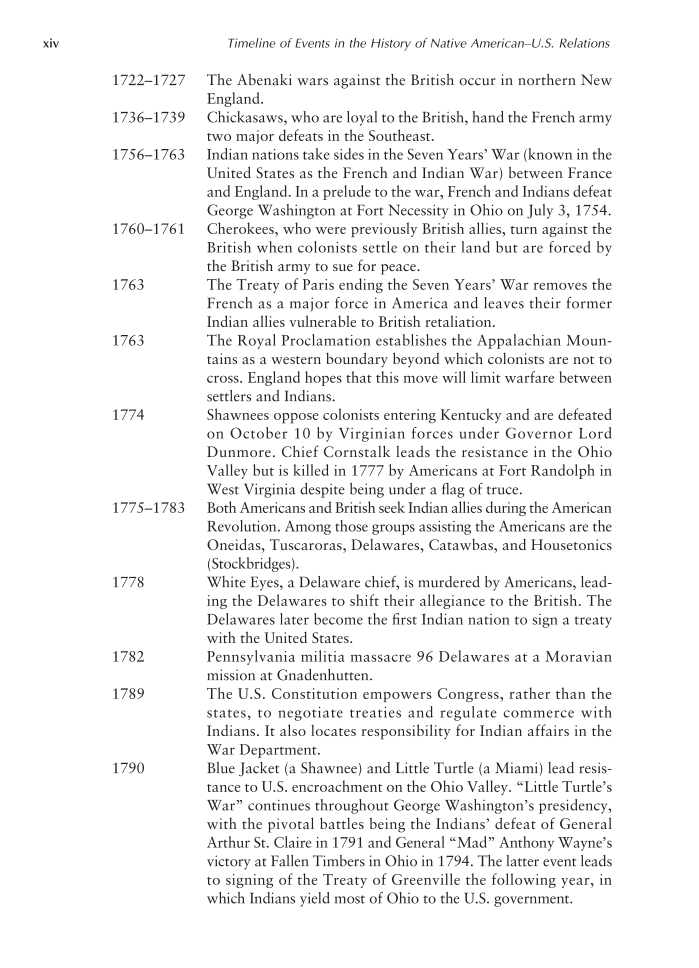1722–1727 The Abenaki wars against the British occur in northern New England. 1736–1739 Chickasaws, who are loyal to the British, hand the French army two major defeats in the Southeast. 1756–1763 Indian nations take sides in the Seven Years’ War (known in the United States as the French and Indian War) between France and England. In a prelude to the war, French and Indians defeat George Washington at Fort Necessity in Ohio on July 3, 1754. 1760–1761 Cherokees, who were previously British allies, turn against the British when colonists settle on their land but are forced by the British army to sue for peace. 1763 The Treaty of Paris ending the Seven Years’ War removes the French as a major force in America and leaves their former Indian allies vulnerable to British retaliation. 1763 The Royal Proclamation establishes the Appalachian Moun- tains as a western boundary beyond which colonists are not to cross. England hopes that this move will limit warfare between settlers and Indians. 1774 Shawnees oppose colonists entering Kentucky and are defeated on October 10 by Virginian forces under Governor Lord Dunmore. Chief Cornstalk leads the resistance in the Ohio Valley but is killed in 1777 by Americans at Fort Randolph in West Virginia despite being under a flag of truce. 1775–1783 Both Americans and British seek Indian allies during the American Revolution. Among those groups assisting the Americans are the Oneidas, Tuscaroras, Delawares, Catawbas, and Housetonics (Stockbridges). 1778 White Eyes, a Delaware chief, is murdered by Americans, lead- ing the Delawares to shift their allegiance to the British. The Delawares later become the first Indian nation to sign a treaty with the United States. 1782 Pennsylvania militia massacre 96 Delawares at a Moravian mission at Gnadenhutten. 1789 The U.S. Constitution empowers Congress, rather than the states, to negotiate treaties and regulate commerce with Indians. It also locates responsibility for Indian affairs in the War Department. 1790 Blue Jacket (a Shawnee) and Little Turtle (a Miami) lead resis- tance to U.S. encroachment on the Ohio Valley. “Little Turtle’s War” continues throughout George Washington’s presidency, with the pivotal battles being the Indians’ defeat of General Arthur St. Claire in 1791 and General “Mad” Anthony Wayne’s victory at Fallen Timbers in Ohio in 1794. The latter event leads to signing of the Treaty of Greenville the following year, in which Indians yield most of Ohio to the U.S. government. xiv Timeline of Events in the History of Native American–U.S. Relations
Document Details My Account Print multiple pages
Print
You have printed 0 times in the last 24 hours.
Your print count will reset on at .
You may print 0 more time(s) before then.
You may print a maximum of 0 pages at a time.










































































































































































































































































































































































